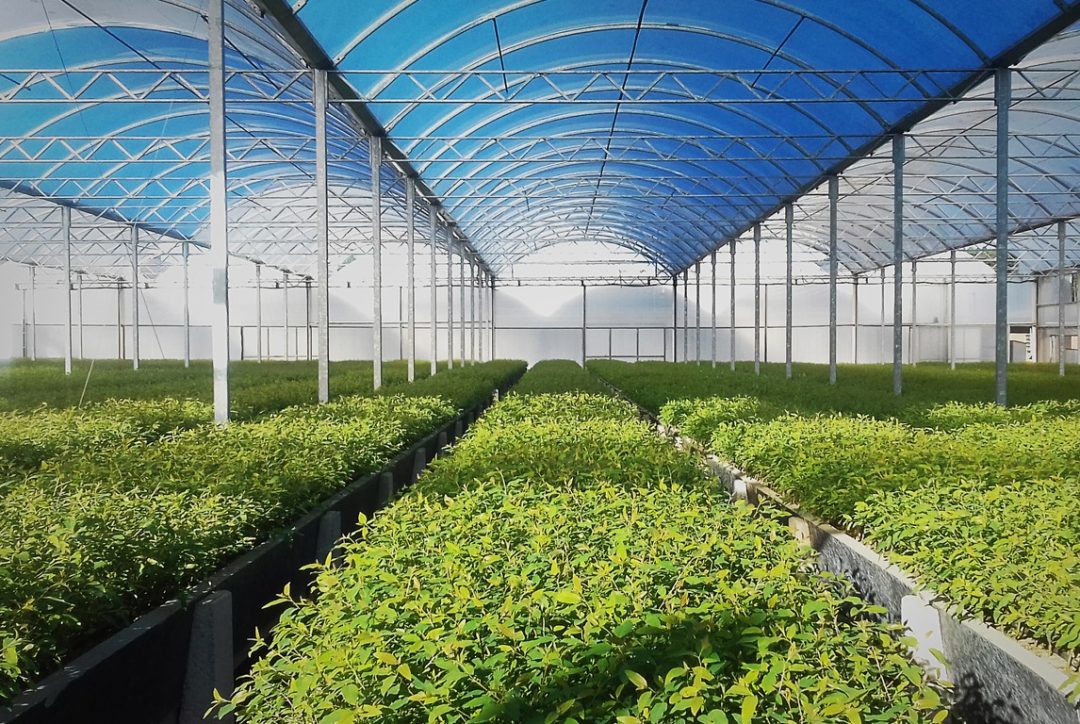
To meet our planet’s increasing demand for sustainable production while coping with supply chain disruptions, food and beverage (F&B) industry players are turning to new technologies. From product formulation and process optimization to the need to ensure consistency, safety, quality and sustainability, advanced measurement techniques are playing an essential role in propelling the sector into the future.
Proper management of carbon dioxide (CO2) concentrations in greenhouses increases efficiency and product quality. An optimal level of between 800 and 1000 parts per million not only raises productivity by as much as 40% in the darkest time of the year, but also improves the quality of the produce. By contrast, using too much CO2 increases costs and can be harmful to the crop.
The optimization process requires continuous and accurate information from both indoor and outdoor environments. CO2, relative humidity and temperature are typically measured inside greenhouses, while outside measurement parameters include wind speed and direction, precipitation and solar radiation. The optimal temperature in a greenhouse varies between 60–75° F (16-24° C) depending on the crop grown and desired level of photosynthetic activity. Optimal relative humidity also depends on the plant species, with a typical range varying between 50% and 70%. Understanding how all these growth factors interact is critical to ensuring the well-being of the plants in greenhouses and vertical farming.
Innovations in Processing
F&B processing systems must be as efficient as possible to enable a traceable and transparent supply chain. Consequently, the food processing sector needs to develop products that have a sufficient shelf life and can withstand transportation and storage without compromising on high product quality or taste.
When decision-makers focus on lowering costs and increasing energy efficiency, the ability to find and maintain optimal operating conditions becomes key. Process optimization and control depend on several critical measurements, including relative humidity, CO2 and Brix or dry solids.
Relative humidity measurements are used for streamlining drying processes. When moisture is removed to a safe level, drying can extend the product shelf life by preventing microbial growth and reproduction and reducing moisture-induced biochemical reactions. The use of accurate humidity measurement devices for this purpose helps processors achieve the precise balance between product safety and minimal energy usage, while maintaining — and even enhancing — the quality of foods and beverages.
CO2 measurements are important for keeping employees safe and goods fresh. In food production, CO2 needs to be maintained at a certain level to boost production and ensure working safety and the long lifespan of the equipment. Consequently, CO2 levels should be monitored to avoid accumulation, since the colorless, odorless gas poses a potential risk to human health in high concentrations.
In-line Brix or dry solids measurement of liquid concentrations helps ensure product quality control and remote process diagnostics. The manual collection of measurements and sample analysis in the lab is expensive and time-consuming, while posing the risk of product contamination and delays in the decision-making process. In-line Brix and dry solids measurement also ensures a consistent product appearance, feel and taste; improved overall production sustainability; rapid response to product quality deviations; improved production efficiency, capacity and yield; minimized risk of product recalls, lost sales and legal expenses; accurate labeling; reduced waste, and optimized energy and raw-material consumption.
Optimizing Transport and Storage
The shelf life of produce is greatly affected by transportation and storage conditions. Throughout the food space, CO2 needs to be monitored in storage facilities, ripening rooms, freezers, refrigerators, transportation vehicles, retail outlets, breweries, wineries, logistics hubs and terminals, and during dry ice storage and transportation, to ensure process safety, productivity and product quality. By maintaining proper levels of CO2 in storage facilities and during transportation, shippers can keep produce fresh, ensure the safety of personnel and prevent machinery damage.
The most favorable transportation and storage conditions also depend on humidity and temperature measurements. From frost buildup and condensation to energy efficiency, a number of storage and cargo challenges can be addressed via humidity and dew point instruments that accurately monitor moisture levels to minimize unnecessary heating and defrosting.
Food Retail Solutions
Supply chain innovation doesn’t stop once products find their way onto grocery store shelves. Because high CO2 concentrations can cause unconsciousness and even death, an increasing number of countries recognize the need to use environmentally friendly refrigerators in supermarkets. They’re using CO2 to replace synthetic refrigerants in all retail refrigeration, in store and back of house. As a result, accurate and reliable monitoring is necessary to ensure safety and the rapid detection of potential leaks.
The use of CO2 in retail refrigeration systems allows grocers and other food retailers to lower their greenhouse emissions, while decreasing operational costs by identifying and reducing possible refrigerant leakage with unique humidity sensors.
The monitoring of relative humidity in retail food stores is essential to protecting fruit and vegetables against moisture loss, decay and aging, while ensuring the best product quality. Retail decision-makers can see the effects of changing ambient conditions, and make adjustments accordingly, by understanding relative humidity, absolute humidity, wet-bulb temperature, enthalpy, water concentration and more.
As the world works to reconstruct its food system and fortify and diversify supply chains for production, processing, distribution, markets and consumers, innovative solutions are being utilized at every stage of the F&B supply chain to make our food supply chain stronger.
Kevin Walsh is an application sales engineer at Vaisala.







